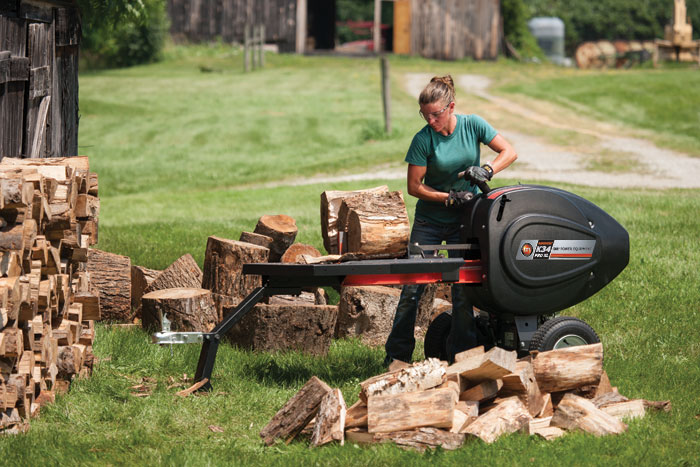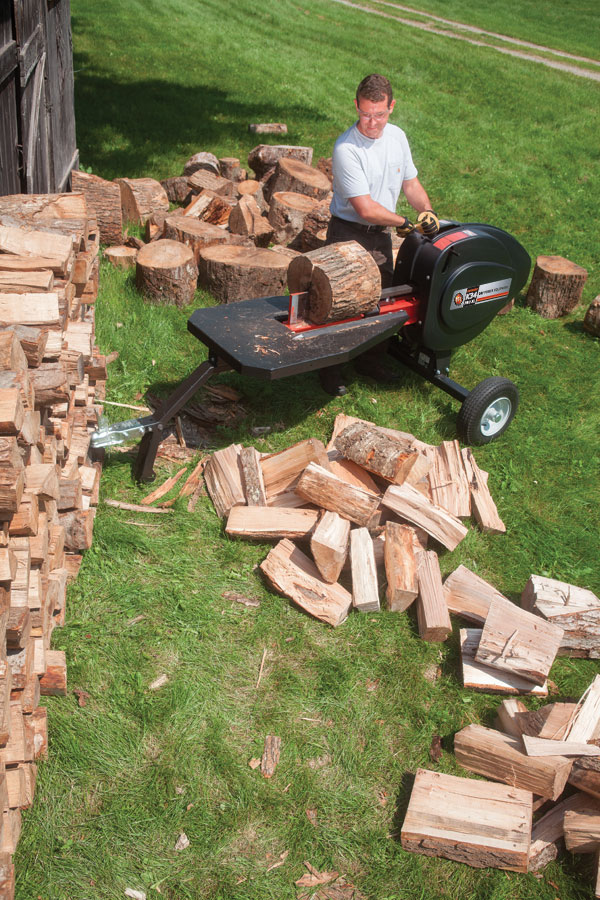6 Incredible Facts About Flywheel Log Splitters
Flywheel technology is the wave of the future when it comes to log splitting. Instead of using hydraulics as most log splitters do, flywheel log splitters use a hefty flywheel system that stores kinetic energy from the engine in spinning flywheels, releasing it in one burst to pop through logs with record speed. No waiting for the ram to slowly press its way through a log, and then painstakingly retract itself. Here are some incredible facts about flywheel log splitters:
1. Their full cycle time is as little as 2.5 seconds.
How long is the cycle time on your hydraulic splitter? It’s probably somewhere in the 15- to 30-second range. Those seconds add up when you’re splitting cord after cord. With a flywheel log splitter, you can expect a cycle time of 2.5 to 3 seconds, including auto-retract. This makes them about 6 times faster than most hydraulic models.
 2. They aren’t measured in terms of tonnage.
2. They aren’t measured in terms of tonnage.
When you go shopping for a new log splitter, the first thing you probably look for is tonnage. It makes sense; in hydraulic splitters, it’s the best way to assess their power. Flywheel log splitters can’t be accurately measured in terms of tons because the force they produce comes in one quick thrust, instead of a prolonged push. So here at DR, we tell you what hydraulic tonnage our flywheel log splitters could outsplit. For example, the Pro-XL RapidFire flywheel splitter can outsplit a 34-ton hydraulic.
 3. They’re easier to maintain.
3. They’re easier to maintain.
With no hydraulic oil or pumps, flywheel log splitters are much easier to maintain than hydraulic units. No leaky valves, no messy oil. The only maintenance a flywheel splitter needs is an engine tune-up now and then, just like any other piece of machinery. And electric-powered models don’t even need that!
4. Yes, they can handle tough logs.
Flywheel log splitters can handle any type of log that a hydraulic model can. Knotty ones, tough ones, hardwoods, you name it. They have the power to pop through even challenging logs at a pace that you just won’t believe!
5. They are available in powerful electric models.
Electric log splitters are a great way to be able to split wood indoors – say in your shed or barn – or just have the convenience of not having to deal with messy oil and gas. Electric hydraulic splitters are usually only available at very low tonnages (3-ton, 5-ton, etc.). This is great for splitting kindling and other small logs, but what about the big guys? DR recently introduced an electric-powered flywheel log splitter that can outsplit any 22-ton hydraulic! That’s plenty of power, all powered by clean electricity.
6. Flywheel technology is nothing new.
While applying flywheel technology to log splitting may be a relatively new concept, the system itself has been around for ages. Modern designs are adapted from mill machinery used during the US’s industrial heyday – solid steel machines built to last and last!
Want to learn more about DR Log Splitters?
Order your FREE Buyer's Guide & DVD!

What's inside
- 24-Page Buyer's Guide
- Action-Packed DVD
- Money-Saving Promotions
